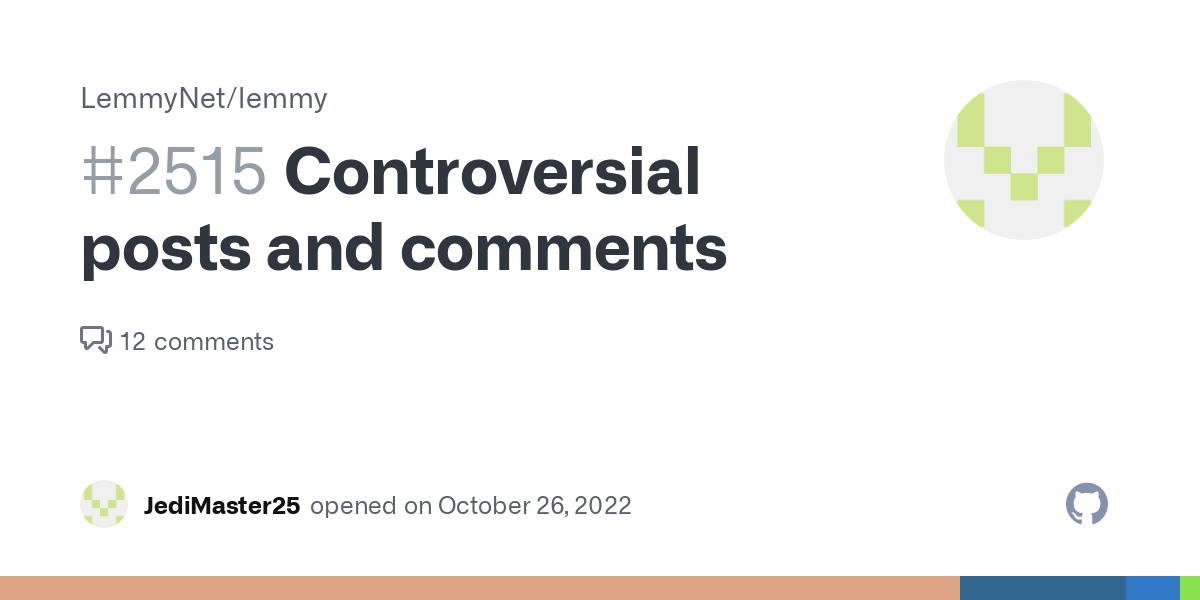- cross-posted to:
- [email protected]
- cross-posted to:
- [email protected]
There is a request for a comment on this issue Controversial posts and comments #2515. Do you have any ideas on how best to implement this?
I’d like to see some more people chime in with opinions, but maybe that’ll come with a PR. At the very least, it’s something that can be moved forward with.



To clarify, since I didn’t focus on OP’s question nearly as much as I could’ve, it does still apply as an edge case. A post starts as some transformation of the poster’s preference vector, then every up/down vote nudges its vector toward/away from the preference vector of the voter. If a post gets 50 downvotes, it’ll be nudged in whatever the opposite direction of all those voter’s preferences are. Then the app just needs to have a policy for showing posts to users so long as it’s within some threshold distance of their preferences. This means it naturally attends to the preferences of the context/community of the post, and if for some reason your own preferences are so far from those downvotes that it’s still close to your own preferences, you can still see it.
It does have the potential to create echo chambers and silence unusual, fringe, or unpopular opinions though so it’s not strictly better than the normal heuristics.
Your point about timespan and criteria reminds me a lot of a technique I’ve been seeing in AI circles lately, eg the Generative Agent paper - sort a database of memories by some combination of metrics like “recency” and “relevancy” (eg distance to feature vector) and select the top-k results to provide to the AI. This approximates human memory, which itself prioritizes recency and similarity along with other metrics like emotional saliency.
As far as making the pitch, well… I don’t know who I’d pitch it to, I’m too disorganized to pursue it myself, and I’m a nobody so no one would listen to me anyway :P Feel free to steal it if you want though.